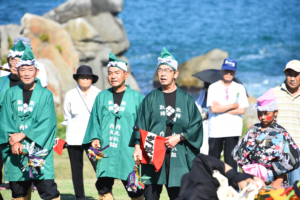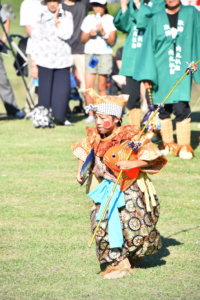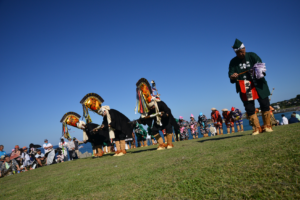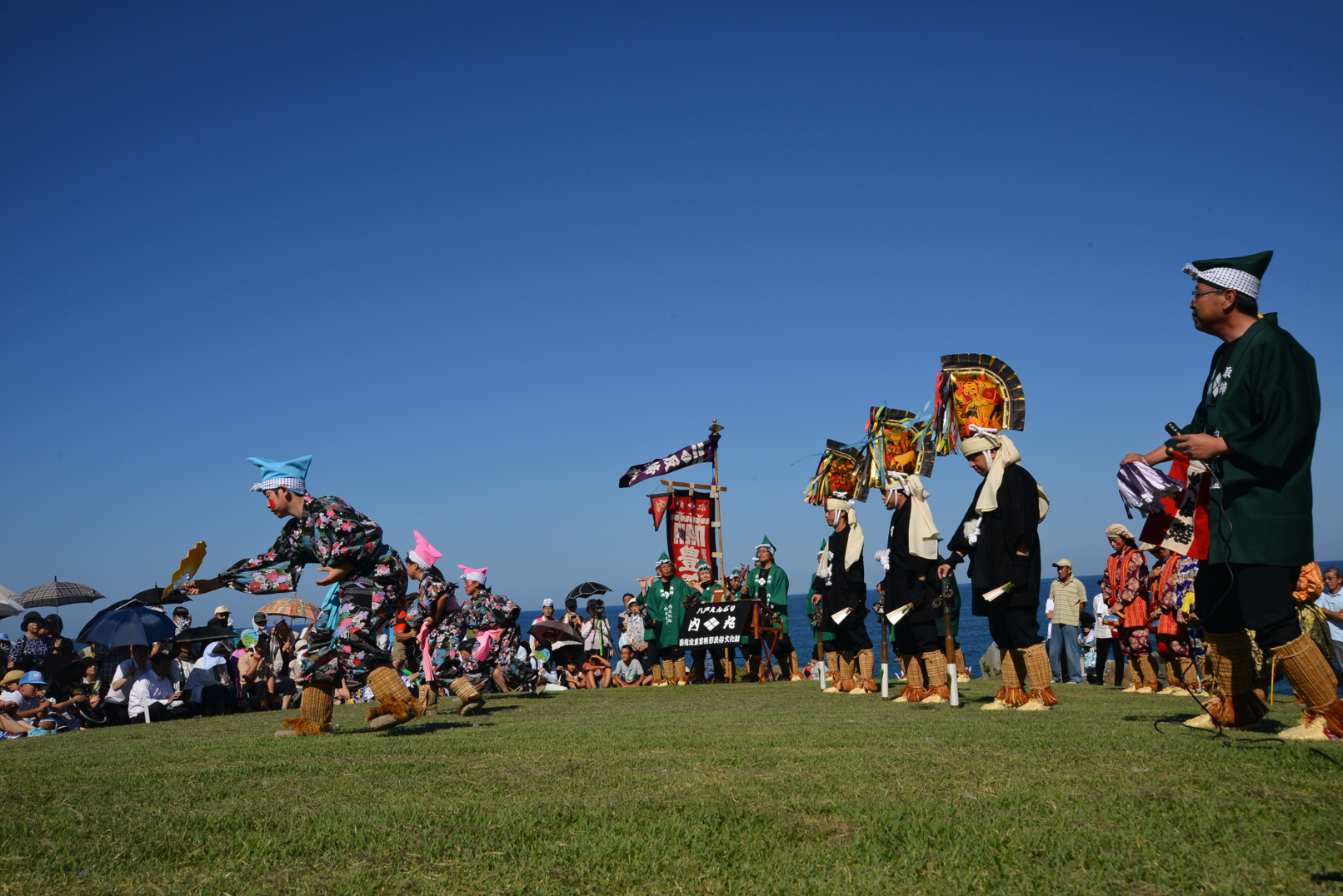内丸えんぶり組
うちまるえんぶりぐみ
Uchimaru Enburi-gumi
所在地 : 青森県八戸市 内丸えんぶり宿(八戸市内丸二丁目1-23)
種別 : ⽥植踊(三陸国際芸術祭過去出演団体)
三陸国際芸術祭出演 : 2016八戸プログラム
八戸地方に伝承されるえんぶりは、その年の豊作を祈願する田植え踊りの一つで、約800 年前に伝わったという説があります。
「八戸のえんぶり」として国の重要無形民俗文化財に指定されています。
現在は約40組が2月17日に八戸市内の長者山新羅神社に奉納したのち、市内商店街や近郊農村部を門付けしてまわります。
組は通常20~30人くらいで構成されます。大きな烏帽子をつけた太夫が、「ジャンギ」と呼ばれる棒を使いながら稲作を表現した舞を踊り、途中には松の舞や大黒舞など様々な祝福舞が入ります。
内丸えんぶり組は創立85年。
取締組の一つで、各組の秩序や服装などを正す役どころを担っています。
3歳児から75歳まで幅広い年齢層で構成され、何代にもわたって大人から子どもたちに伝えられています。
失われつつある地域との繋がりや家族的な温かさもしっかりと根付いており、えんぶりを通じて伝統文化の重要性を理解し、日々活動に励んでいます。
The enburi inherited in the Hachinohe area, is a rice-planting dance to pray for the abundance of harvest for that year, and is said to be handed down since about 800 years ago.
It is nationally designated as an important intangible folk cultural property as “Hachinohe no Enburi”.
On February 17th of every year, about 40 groups make their dedication to the Chojasan Shinra Shrine, Hachinohe City, and then go door-to-door in the city shopping district and suburban rural areas.
Each group usually consists of around 20 to 30 people. The performer wearing the large eboshi (noble’s headwear), uses a stick called jangi to dance and express rice farming, with other blessing dances such as “Matsu No Mai” and “Daikoku Mai” inserted in the middle.
It has been 85 years since the Uchimaru Enburi group was founded, and as one of the control groups, they play a role in correcting the order and clothing for each group.
They are composed of a wide age group ranging from 3 to 75 year olds, passing down the dance in many generations.
Having a deep understanding of the importance of traditional culture through enburi, they work their best every day through a strong sense of community that values the connection within one another and family-like warmth that tends to be lost in many areas.
Movie】



